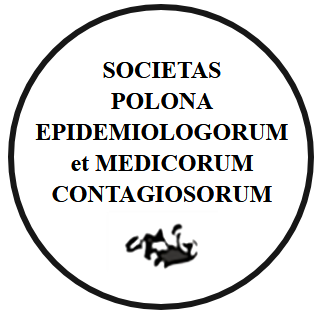Comparison of the prevalence of risk factors for Toxoplasma Gondii infection among pregnant women in rural and urban areas in Poland
Publication date: 2024-02-02
Przegl Epidemiol 2023;77(3):291-301
KEYWORDS
ABSTRACT
INTRODUCTION.
Toxoplasma gondii is a protozoan parasite. While this infection typically exhibits no symptoms in humans, it poses a potential threat to the developing fetus in pregnant women. Several risk factors contribute to toxoplasmosis infection. Adherence to hygiene protocols and avoiding the consumption of raw meat, unwashed vegetables, and fruits may mitigate the risk of this disease.
OBJECTIVE.
This study aimed to compare the prevalence of toxoplasmosis risk factors among pregnant women suspected of toxoplasmosis living in rural areas with those residing in urban areas.
MATERIAL AND METHODS.
A retrospective observational study was conducted by analyzing data from the medical records of pregnant women suspected of toxoplasmosis. These women were consulted at the Provincial Infectious Diseases Hospital between September 2019 and March 2020. The analysis encompassed patients’ demographic data and information concerning toxoplasmosis risk factors. A total of 273 women’s data were included in the analysis. Diagnosis relied on serological verification using the VIDAS® analyzer (bioMérieux, Lyon, France).
RESULTS.
Women residing in rural areas were less likely to report a good socio-economic status (p=0.0064), and toxoplasmosis infection was less frequently ruled out (p=0.0023). In comparison to women living in urban areas, pregnant women from rural regions were more likely to have confirmed primary toxoplasmosis (p=0.0164). Additionally, they were more prone to working in gardens without gloves (p < 0.0001), consuming unwashed vegetables (p= 0.0025), eating raw meat during pregnancy (p=0.0008), and cats caregiving during pregnancy (p=0.0002). This exposure included both care for domestic cats before and during pregnancy (p=0.0069) and interactions with wild cats (p < 0.0001).
CONCLUSIONS.
Pregnant women living in rural areas exhibited significantly higher exposure to toxoplasmosis risk factors. They also displayed a higher incidence of primary infections during pregnancy and a lower rate of excluded infections.
Share
RELATED ARTICLE
We process personal data collected when visiting the website. The function of obtaining information about users and their behavior is carried out by voluntarily entered information in forms and saving cookies in end devices. Data, including cookies, are used to provide services, improve the user experience and to analyze the traffic in accordance with the Privacy policy. Data are also collected and processed by Google Analytics tool (more).
You can change cookies settings in your browser. Restricted use of cookies in the browser configuration may affect some functionalities of the website.
You can change cookies settings in your browser. Restricted use of cookies in the browser configuration may affect some functionalities of the website.





